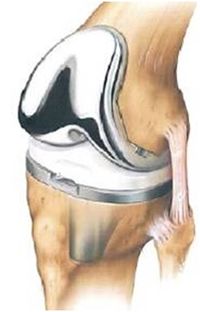To make sure you get the most benefit from total knee arthroplasty, there are several things you should consider before the procedure. These factors include recovery time, pain relief, and reliability. Read on to learn more. Read this article to learn about some of the most important factors you should consider before undergoing the procedure. You should also read about common complications and how to care for your knee after surgery. This procedure will require you to take several weeks off work, so you should plan ahead.
Table of Contents
Pain Relief
After your total knee arthroplasty surgery, you’ll likely be on pain medication for several weeks, as pain is a normal side effect of this procedure. However, it is important to note that there are several ways to manage pain, and your doctor will provide you with more information. Some options include massage, ice, or cold packs. Ice packs can be applied to the knee several times a day, and they can be used to ease the discomfort. Massage can also help reduce the pain, as can aromatherapy and music therapy. If these methods are not effective, your physician may prescribe you with prescription pain medications to help reduce the symptoms.
Patients may also use non-narcotic NSAIDs such as acetaminophen. These medications may reduce the need for rescue narcotics. NSAIDs can also improve the effectiveness of other treatment modalities. Taking non-steroidal anti-inflammatory drugs, such as acetaminophen, after total knee arthroplasty, will ease post-operative pain.
Reliability
To assess the reliability of measurements used in total knee arthroplasty, researchers have developed a 3D software solution to template the surgical area in three dimensions. These software solutions include computed tomography (CT) datasets. In this study, bone landmarks were used in 3D planning to assess intra and interobserver reliability. The study included 45 patients who had undergone total knee arthroplasty.
Surgical accuracy of TKA is dependent on the rotational alignment of the femoral component. The exact position of the femoral component may affect the stability of the joint in varus and valgus flexion and the long-term reliability of the implant. Historically, surgeons have used three reference lines to determine the proper rotational alignment of the femoral component: the transepicondylar axis, the posterior condylar axis, and the Whiteside’s line. However, all three reference lines may not be equally reliable in all patients.
Complications
While total knee arthroplasty (TKA) is considered a safe and effective procedure to treat advanced osteoarthritis or inflammatory arthritis of the knee, it is not without complications. These complications can occur during and after surgery and include anesthesia-related risks and medications. Some patients experience allergic reactions and other complications that may occur after surgery. Below, we’ll discuss common complications of TKA and how to avoid them.
Nerve damage during the surgery can lead to pain in the leg that can radiate. It can also cause numbness or “tingling” sensations. Most patients recover from this complication within six months. During the surgery, surgeons must cut and stretch the skin and muscle to perform the procedure. This pressure can damage nerves surrounding the joint and in the leg. In some cases, nerve exploration is required following the procedure.
Recovery
Although total knee replacement is among the most common surgeries performed today, only about 10% to 20% of patients report being satisfied with their results. In order to measure recovery, postoperative functional outcomes are typically assessed using a Short Form-36 health survey and self-report questionnaires. However, performance-based tests are also used to assess functional recovery. Recovery is influenced by many factors, such as the severity of the knee condition and the patient’s general health.
The duration of physical impairments, social roles, and work participation improved significantly over two years. The biggest improvement in physical function occurred within the first three months of surgery. Patients gradually recovered from limitations on activities and social roles over the next several months. Recovery after total knee arthroplasty is generally stable after three months, with the most improvements occurring between six and nine months postoperatively. Patients with musculoskeletal comorbidities and younger patients may experience suboptimal recovery.

